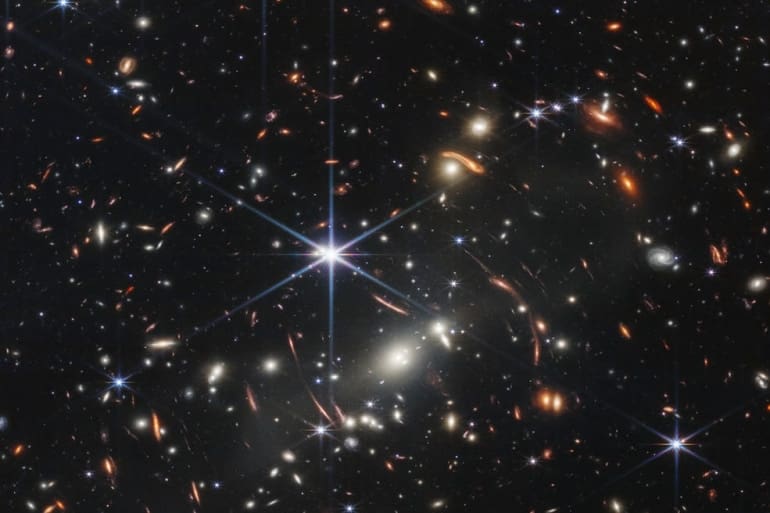
US President Joe Biden on Monday unveiled one of the James Webb Space Telescope’s image galaxy cluster SMACS 0723, known as Webb’s First Deep Field in a preview event at the White House in Washington.
The deepest and clearest infrared image of the distant universe has been captured in this first image from NASA’s $10 billion James Webb Space Telescope, dating back to 13 billion years.
Known as Webb’s First Deep Field, this image of galaxy cluster SMACS 0723 contains a detailed image of the universe. Thousands of galaxies including the faintest objects ever observed in the infrared have appeared in Webb’s view for the first time. This sliver of the vast universe covers a patch of sky the size of a grain of sand held at arm’s length by someone on the ground. The meticulous effort of 6 months in remotely unfurling the observatory’s various components, paves the way for a revolutionary era of astronomical discovery.
“Today is a historic day… This is a historic moment, for America and all of humanity”. US President Joe Biden commented upon disclosing the image. During the preview of the photos, US Vice President Kamala Harris showed her excitement. “This is a very exciting moment for all of us. Today is an exciting new chapter for the universe,” she said.
On Friday, NASA revealed the first five cosmic targets for James Webb. The Carina Nebula, WASP-96b, the Southern Ring Nebula, Stephan’s Quintet, and SMACS 0723 are among them. An international committee consisting of representatives from NASA, the European Space Agency, the Canadian Space Agency, and the Space Telescope Science Institute in Baltimore chose the targets.
“The images generated by the telescope show the power of American scientific leadership,” Biden said, articulating his admiration for the satellite’s technology and work. “The federal government must invest more in science and technology than it has previously,” he said.
“Webb can see backward in time just after the big bang by looking for galaxies that are so far away, the light has taken many billions of years to get from those galaxies to ourselves,” said Jonathan Gardner, Webb’s deputy senior project scientist at NASA in a statement during a conference. According to NASA Deputy Administrator Pam Melroy, this mission has enough excess fuel capacity to last 20 years.
“Webb is bigger than Hubble so that it can see fainter galaxies that are further away,” he said.



